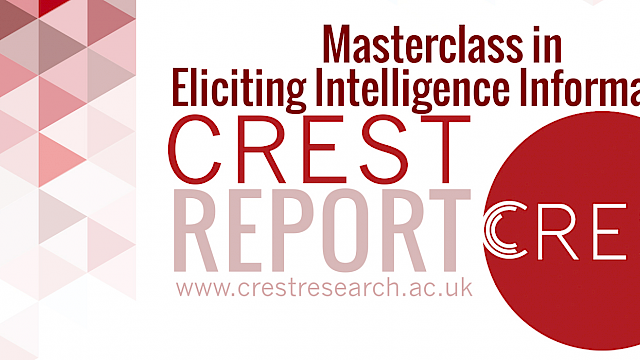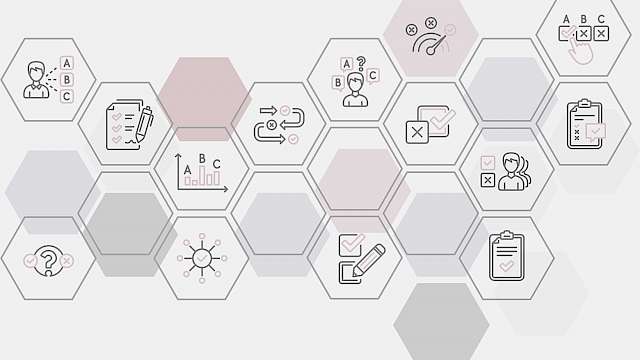Executive Summary
- 7033 unique studies were sifted to identify studies that examined the human ability to recognise suspicious behaviour.
- 11 studies met the inclusion criteria.
- Seven studies looked at the difference in ability between experienced CCTV operators and controls; two looked at the influence of context; one on the influence of stressors; and one on the influence of training.
- No significant differences were found between experts and novices. Accuracy appears to be around chance level.
- Familiarity with an area may have a positive effect on detecting suspicious behaviour.
- Participants exposed to security cues while carrying out tasks were more often correctly identified by observers as either innocent or hostile based on their behaviour.
- Behaviour based training may increase an individual’s ability to recognise suspicious behaviour.
- Individuals differ in cognitive and perceptual skills and therefore infer different meanings from viewed behaviour. These differences in the interpretation of cues may affect the ability to accurately detect suspicious behaviour.
- Cues of hostile intent may be difficult to interpret accurately due to the observer’s absence of the perpetrator's baseline ‘normal’ behaviour with which to compare.
- Establishing non-verbal indicators of hostile intent that are accurate across many contexts is difficult. Observers need knowledge of ‘normal’ behaviour for each specific location.
Introduction
Security procedures at large public venues and transportation hubs rely upon vigilant and engaged security officers who are tasked, in part, with timely and appropriate responses to suspicious behaviours (behaviour that seem unusual or out of place, that indicates that someone is in the process of planning or committing a malicious act) of potential hostiles (be they criminals, or terrorists) looking to victimise normal site users. This includes individuals conducting hostile reconnaissance, defined as “purposeful observation with the intention of collecting information to inform the planning of a hostile act against a specific target” (CPNI, 2016).
The presumption is that hostiles, armed with the ‘guilty knowledge’ of their true intention will behave or present in non-normative ways versus normal site users and thus provide opportunities for security to detect these suspicious behaviours (Gill et al., 2020). But how capable are individuals at detecting suspicious behaviour? This systematic review assesses the current evidence base for the human ability to accurately recognise suspicious behaviour.
The evidence for a narrower form of deception – lie detection – paints an interesting picture. In terms of lie detection, Bond and DePaulo’s (2006) meta-analysis found that just 54% of untrained observer judgments were correct, only slightly higher than chance. Performance was worse when observers could only see the target person (52% accuracy), than when they could only hear them (63%). However, liars are more nervous and more conscious of their own behaviour than truth tellers (Vrij, 2008; Vrij et al, 2019) and when being interviewed are aware that they are being actively observed and scrutinised. Those with hostile intent may not believe that they are being watched, but they may be vulnerable to the spotlight effect – a tendency to believe they are being noticed more than they are and as such overestimate the extent to which they are the focus of the attention of others (Gilovich et al, 2000).
Read more
Blechko, A., Darker, I., & Gale, A. (2008). Skills in detecting gun carrying from CCTV. In 2008 42nd Annual IEEE International Carnahan Conference on Security Technology (265-271). IEEE.
Blechko, A., Darker, I. T., & Gale, A. G. (2009). The role of emotion recognition from non-verbal behaviour in detection of concealed firearm carrying. In Proceedings of the Human Factors and Ergonomics Society Annual Meeting (Vol. 53, No. 18, pp. 1363-1367). Sage CA: Los Angeles, CA: SAGE Publications.
Cooke N.J., & Winner J.L. (2008) Human factors of homeland security. In: Boehm-Davis DA (ed) Reviews of human-factors and ergonomics (3). Human Factors and Ergonomics Society, Santa Monica, CA, pp 79–110
Crundall, D., & Eyre-Jackson, L. (2017). Predicting criminal incidents on the basis of non-verbal behaviour: The role of experience. Security Journal, 30(3), 703-716.
Graham, G., Sauer, J. D., Akehurst, L., Smith, J., & Hillstrom, A. P. (2018). CCTV observation: the effects of event type and instructions on fixation behaviour in an applied change blindness task. Applied cognitive psychology, 32(1), 4-13.
Grant, D., & Williams, D. (2011). The importance of perceiving social contexts when predicting crime and antisocial behaviour in CCTV images. Legal and Criminological Psychology, 16(2), 307-322.
Koller, C. I., Wetter, O. E., & Hofer, F. (2016). ‘Who's the Thief?’ The Influence of knowledge and experience on early detection of criminal intentions. Applied Cognitive Psychology, 30(2), 178-187.
Mann, S., Deeb, H., Vrij, A., Hope, L., & Pontigia, L. (2020). Detecting smugglers: Identifying strategies and behaviours in individuals in possession of illicit objects. Applied Cognitive Psychology, 34(2), 372-386.
Regens, J. L., Mould, N., Jensen III, C. J., Edger, D. N., Cid, D., & Graves, M. (2017). Effect of intelligence collection training on suspicious activity recognition by front line police officers. Security Journal, 30(3), 951-962.
Troscianko, T., Holmes, A., Stillman, J., Mirmehdi, M., Wright, D., & Wilson, A. (2004). What happens next? The predictability of natural behaviour viewed through CCTV cameras. Perception, 33(1), 87-101.
Wijn, R., van den Berg, H., & Lousberg, M. (2013). On operator effectiveness: the role of expertise and familiarity of environment on the detection of deviant behaviour. Personal and ubiquitous computing, 17(1), 35-42.
Wijn, R., van der Kleij, R., Kallen, V., Stekkinger, M., & de Vries, P. (2017). Telling friend from foe: Environmental cues improve detection accuracy of individuals with hostile intentions. Legal and criminological psychology, 22(2), 378-399.
Zhang, K., Frumkin, L. A., Stedmon, A., & Lawson, G. (2013). Deception in context: coding nonverbal cues, situational variables and risk of detection. Journal of Police and Criminal Psychology, 28(2), 150-161.
Copyright Information
As part of CREST’s commitment to open access research, this text is available under a Creative Commons BY-NC-SA 4.0 licence. Please refer to our Copyright page for full details.
IMAGE CREDITS: Copyright ©2024 R. Stevens / CREST (CC BY-SA 4.0)






